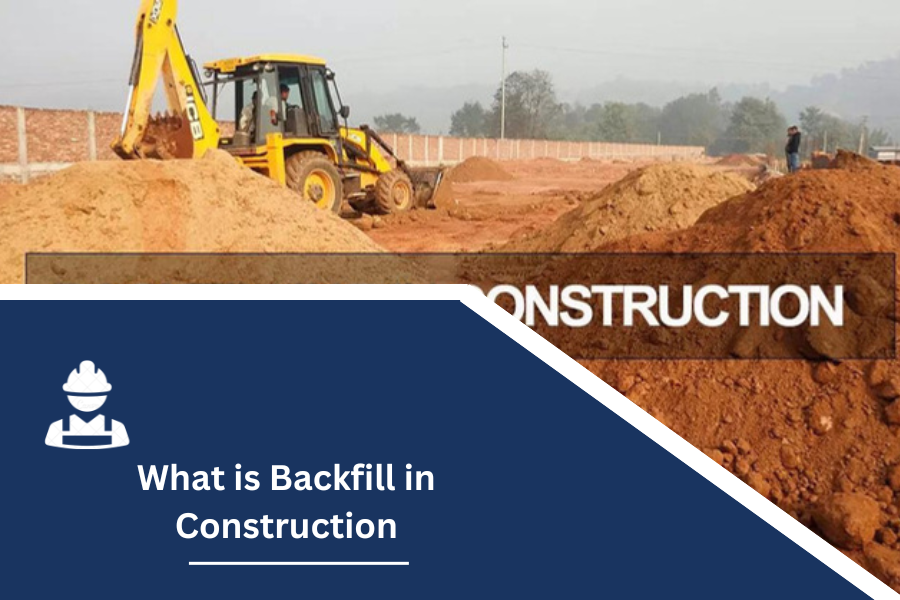What is Backfill in Construction? Understanding the Importance of Backfill in Construction
Table of Contents
Introduction
Construction is a complex process that involves various intricate steps, and one crucial aspect often overlooked is backfill. In this article, we’ll delve into the significance of backfill in construction, exploring its definition, methods, and the vital role it plays in ensuring the stability and longevity of structures.
What is Backfill?
Backfill in construction refers to the process of refilling an excavation or trench with soil or other materials after the structure’s foundation has been established. This step is pivotal for maintaining the integrity of the construction project, providing support to the foundation, and preventing potential issues that may arise from voids or settling.
The Types of Backfill Materials
1. Soil Backfill
The most common type of backfill material is soil, chosen for its cost-effectiveness and availability. Different soil types have varying compaction and drainage properties, making it essential to select the right type based on the specific requirements of the project.
2. Gravel Backfill
Gravel is another popular choice for backfill, known for its excellent drainage properties. It is often used in areas where proper water drainage is crucial to prevent issues such as erosion and water accumulation.
3. Geosynthetic Backfill
For projects with specific engineering needs, geosynthetic materials may be used as backfill. These materials, including geotextiles and geogrids, offer reinforcement and stabilization, particularly in challenging soil conditions.
The Backfill Process
The backfill process involves several key steps to ensure proper support and stability:
1. Compaction
Compacting the backfill material is crucial to reduce settlement and enhance the load-bearing capacity of the soil. This step is typically performed in layers to achieve optimal compaction.
2. Moisture Control
Managing moisture content is essential to prevent soil expansion or contraction, which can compromise the stability of the backfilled area. Proper moisture control ensures the soil maintains its desired density.
3. Backfilling Around Utilities
When dealing with construction near existing utilities, careful attention must be paid to backfilling around them. This involves using materials and methods that protect the utilities from damage and maintain their functionality.
Importance of Backfill in Construction
1. Structural Support
Backfill provides essential support to the foundation, reducing the risk of settling or shifting. This support is especially crucial for structures like retaining walls and foundations.
2. Drainage Improvement
Properly selected backfill materials contribute to effective drainage, preventing water accumulation around the foundation. This is vital for avoiding issues such as water damage and soil erosion.
3. Prevention of Voids
Backfilling eliminates voids or gaps around the foundation, reducing the risk of structural issues. Voids can lead to uneven settling, compromising the stability of the entire structure.
Challenges and Considerations
1. Soil Compatibility
Selecting the right backfill material based on soil compatibility is essential. Different soil types have distinct properties, and understanding these characteristics is crucial for a successful construction project.
2. Environmental Impact
Consideration must be given to the environmental impact of backfill materials. Eco-friendly options should be explored to minimize the ecological footprint of the construction process.
Conclusion
In conclusion, backfill is a critical component of the construction process, providing structural support, improving drainage, and preventing voids. A thorough understanding of backfill materials, methods, and challenges is essential for ensuring the success and longevity of construction projects.
FAQs
Why is proper compaction crucial in the backfill process?
Proper compaction ensures the stability and load-bearing capacity of the backfilled soil, reducing the risk of settlement.
Can any soil type be used for backfilling?
While various soil types can be used, selecting the right type based on compaction and drainage properties is essential.
What role does moisture control play in backfilling?
Moisture control prevents soil expansion or contraction, maintaining the desired density and stability of the backfilled area.
How does backfill contribute to drainage improvement?
Backfill materials with good drainage properties help prevent water accumulation around the foundation, avoiding issues like water damage and erosion.
Why is environmental impact a consideration in backfill material selection?
Choosing eco-friendly backfill options minimizes the environmental impact of the construction process, promoting sustainability.




